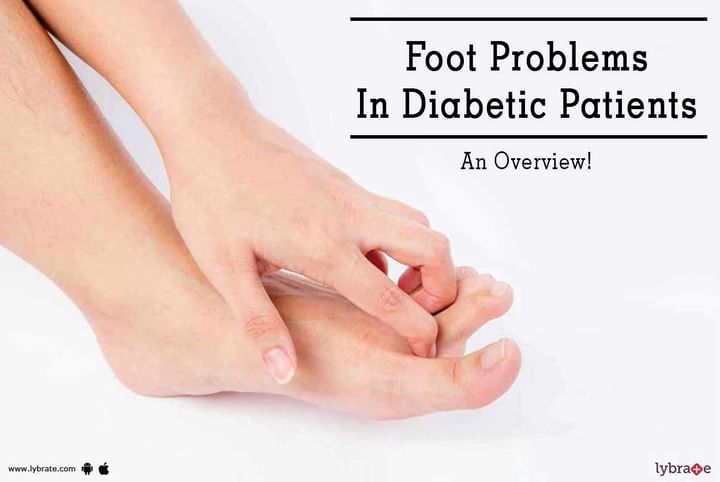Foot Problems In Diabetic Patients - An Overview!
There are many problems that come along with Diabetes. Such problems are associated with the foot. These foot problems may be infectious which makes it difficult for a person to walk.
Let’s know some of the common foot problems associated with Diabetes.
When the diabetes is not being managed successfully by medication it can affect the nerves. Damaged nerves in the feet or legs result in diabetic neuropathy. When there is no sensation of pain, heat, cold, or pressure in the legs or feet, it is called sensory diabetic neuropathy.
Not sensing the pain or a prick does not mean it does not affect the body. An open wound can cause infections if it goes unnoticed. Muscular function degeneration can cause postural abnormality and difficulty in walking. Abnormal pressure on the foot due to alignment issues can cause foot ulcers.
Treatment: Neurological treatment includes medication and physiotherapy. Surgery is not recommended because it can cause more complications. Keeping the feet clean and moisturized to prevent cracks helps avoid infection. Keeping it dry (from humidity, not from clinical moisturizers) ensures no fungal growth.
Peripheral Vascular Disease -
This too can cause foot ulcers. The blood flow is obstructed. This makes wounds heal slower, leaving it exposed to infection. Slow blood flow and slower healing cause ulcers and gangrene (cell death) as well.
Treatment: Ensuring clean, moisturized, but dry feet help prevent ulcers and infection. Anti-fungal medication.
Infected Nails -
Fungal infection can also originate in the nails. This makes the nails brittle, thick, difficult to clip, yellow, and crumbly. The infection can spread to the rest of the foot and even to the hands when it comes in contact.
Treatment: Ensuring clean regime of the foot, and clipping the nails once a week to avoid ingrown nails. Anti-fungal medication.
Calluses -
Hard skin build-up under the foot happens due to uneven pressure on the feet. This uneven pressure can happen due to wearing ill-fitting shoes, abnormal gait due to misalignment of the feet, or due to excessive weight.
Treatment: Diabetic shoes, keeping weight in check, physiotherapy, taking care of the skin under the foot. Avoid cutting or tearing at the calluses.
Corns -
Hard skin between toes or under toes are caused by excessive and uneven pressure and friction. This is painful and makes walking uneasy.
Treatment: Exfoliation, gently removing dead tissues and dirt. Avoid cutting or tearing at the tissues. Keeping the feet clean and moisturized.
Bunions and Hammertoes -
This is often genetic. But diabetics are more likely to suffer from bone misalignment and muscle weakness in the feet. Misaligned toes and the resultant toes make it difficult to walk and causes sores and blisters.
Treatment: Surgery, corrective footwear.
Almost all diabetes-related foot problems can be prevented or managed with medicated shoes, maintaining hygiene, limited exposure of the feet to water or dust, and of course, by managing diabetes and blood sugar itself.



+1.svg)
